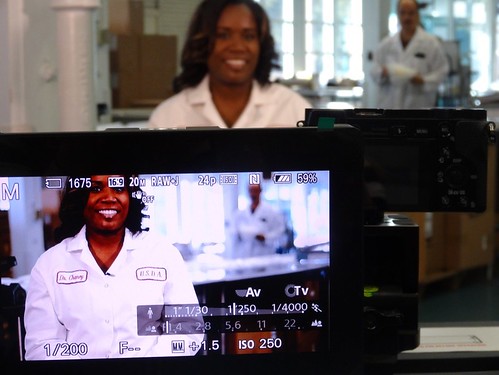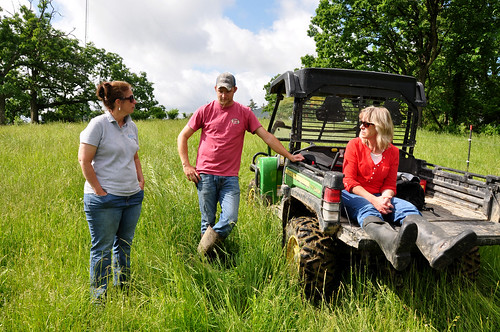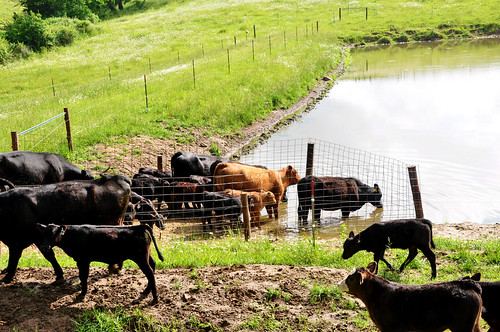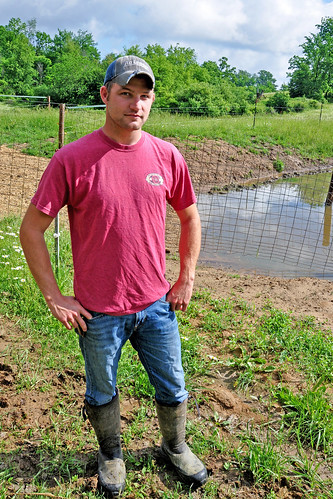NEW YORK--(
BUSINESS WIRE)--Pfizer Inc. (NYSE:PFE) announced today top-line results from Oral Clinical Trials for tofAcitinib in ulceratiVE colitis (OCTAVE) Sustain, the third Phase 3 study of XELJANZ
® (tofacitinib citrate) being investigated in patients with moderately to severely active ulcerative colitis (UC). OCTAVE Sustain is a 52 week study that evaluated oral tofacitinib 5 mg and 10 mg twice daily (BID) as a maintenance treatment in adult patients with moderately to severely active UC who previously completed and achieved clinical response in either the OCTAVE Induction 1 or OCTAVE Induction 2 studies.
Top-line results from the OCTAVE Sustain study showed that the proportion of patients in remission at week 52, the primary efficacy endpoint, was significantly greater in both the tofacitinib 5 and 10 mg BID groups compared to placebo. In OCTAVE Sustain, remission was defined as total Mayo scorea ≤2, no subscore >1, and rectal bleeding subscore of 0. No new or unexpected safety findings for tofacitinib were observed in the study.
“Ulcerative colitis is a chronic, often debilitating inflammatory condition that can be difficult to treat. There are a limited number of therapies available and patients need additional treatment options” said Michael Corbo, PhD, Chief Development Officer, Inflammation & Immunology, Pfizer, Inc. “These findings, along with the previously released positive induction data from the OCTAVE studies, are encouraging and provide evidence that tofacitinib, if approved, has the potential to be an effective new oral treatment option that both induces and maintains remission. We are proud to advance our clinical development program for tofacitinib as we work to bring a potential new treatment option to patients living with ulcerative colitis.”
OCTAVE Sustain is a Phase 3, randomized, double-blind, placebo-controlled, parallel group, multi-center study. A total of 593 patients were randomized to tofacitinib 5 mg BID, tofacitinib 10 mg BID and placebo BID. Detailed analyses of OCTAVE Sustain, including additional efficacy and safety data, will be submitted for presentation at a future scientific meeting.
About the OCTAVE Clinical Development Program
The OCTAVE global clinical development program includes three Phase 3 studies, OCTAVE Induction 1, OCTAVE Induction 2, and OCTAVE Sustain, as well as a long-term extension trial, OCTAVE Open. We expect that these four studies will form the submission package to regulatory authorities for a potential UC indication.
OCTAVE Induction 1 and OCTAVE Induction 2 are two replicate Phase 3 placebo-controlled studies that evaluated induction of remission by oral tofacitinib 10 mg BID in adult patients with moderately to severely active UC. Subjects needed to have failed or been intolerant to UC treatments including corticosteroids, thiopurines or tumor necrosis factor inhibitors (TNFi).
OCTAVE Sustain is a Phase 3 placebo-controlled study evaluating oral tofacitinib 5 mg and 10 mg BID as maintenance therapy in adult patients with moderately to severely active UC.
OCTAVE Open is an ongoing open-label extension study designed to assess the safety and tolerability of tofacitinib 5 mg and 10 mg BID in patients who have completed or who have had treatment failure in OCTAVE Sustain or who were non-responders upon completing OCTAVE Induction 1 or 2.
About Ulcerative Colitis
UC is a chronic, often debilitating inflammatory bowel disease that affects millions of people worldwide. It is believed that UC is the result of complex interactions between multiple factors that include the environment, genetic predisposition, immune response, and the gut microbiome in the colon or intestines. It can cause abdominal pain, fever, weight loss and chronic, bloody diarrhea. UC can have an effect on work, family and social activities. In up to one-third of patients with UC, treatment is not completely successful or complications arise. Under these circumstances, surgery to remove the colon (colectomy) may be considered. Even after surgery, certain symptoms of UC may still persist.
About XELJANZ (tofacitinib citrate) and XELJANZ XR (tofacitinib citrate) extended-release
XELJANZ®/XELJANZ XR® (tofacitinib citrate) is a prescription medicine called a Janus kinase (JAK) inhibitor. In the United States, XELJANZ XR 11 mg QD is the first and only once-daily oral JAK inhibitor approved for the treatment of moderate to severe rheumatoid arthritis (RA).
As the developer of XELJANZ/XELJANZ XR, Pfizer is a leader in JAK innovation. XELJANZ is approved in more than 45 countries around the world for the treatment of moderate to severe RA as a second-line therapy after failure of one or more disease-modifying antirheumatic drugs (DMARDs).
Pfizer is committed to advancing the science of JAK inhibition and enhancing understanding of XELJANZ through a robust clinical development program. The efficacy and safety profile of XELJANZ has been studied in approximately 6,200 patients with moderate to severe RA, amounting to more than 19,400 patient-years of drug exposure in the global clinical development program.
References available upon request
XELJANZ/XELJANZ XR U.S. Label Information
XELJANZ (tofacitinib citrate)/XELJANZ XR (tofacitinib citrate) extended-release is a prescription medicine called a Janus kinase (JAK) inhibitor. XELJANZ/XELJANZ XR is used to treat adults with moderately to severely active rheumatoid arthritis in which methotrexate did not work well. XELJANZ/XELJANZ XR may be used as a single agent or in combination with methotrexate (MTX) or other non-biologic disease-modifying antirheumatic drugs (DMARDs). Use of XELJANZ/XELJANZ XR in combination with biologic DMARDs or potent immunosuppressants, such as azathioprine and cyclosporine, is not recommended.
- It is not known if XELJANZ/XELJANZ XR is safe and effective in people with hepatitis B or C.
- XELJANZ/XELJANZ XR is not for people with severe liver problems.
- It is not known if XELJANZ/XELJANZ XR is safe and effective in children.
Important Safety Information
- XELJANZ/XELJANZ XR can lower the ability of the immune system to fight infections. Some people can have serious infections while taking XELJANZ/XELJANZ XR, including tuberculosis (TB), and infections caused by bacteria, fungi, or viruses that can spread throughout the body. Some people have died from these infections. Healthcare providers should test patients for TB before starting XELJANZ/XELJANZ XR, and monitor them closely for signs and symptoms of TB and other infections during treatment. People should not start taking XELJANZ/XELJANZ XR if they have any kind of infection unless their healthcare provider tells them it is okay.
- People may be at a higher risk of developing shingles.
- XELJANZ/XELJANZ XR may increase the risk of certain cancers by changing the way the immune system works. Lymphoma and other cancers, including skin cancers, can happen in patients taking XELJANZ/XELJANZ XR.
- The risks and benefits of treatment should be considered prior to initiating XELJANZ/XELJANZ XR in patients with chronic or recurrent infection; who have been exposed to tuberculosis; with a history of a serious or an opportunistic infection; who have resided or traveled in areas of endemic tuberculosis or endemic mycoses; or with underlying conditions that may predispose them to infection.
- Viral reactivation, including cases of herpes virus reactivation (e.g., herpes zoster), was observed in clinical studies with XELJANZ.
- Use of live vaccines should be avoided concurrently with XELJANZ/XELJANZ XR. Update immunizations in agreement with current immunization guidelines prior to initiating XELJANZ/XELJANZ XR therapy.
- Some people who have taken XELJANZ with certain other medicines to prevent kidney transplant rejection have had a problem with certain white blood cells growing out of control (Epstein Barr virus-associated post-transplant lymphoproliferative disorder).
- Some people taking XELJANZ/XELJANZ XR can get tears in their stomach or intestines. This happens most often in people who also take nonsteroidal anti-inflammatory drugs (NSAIDs), corticosteroids, or methotrexate.
- XELJANZ/XELJANZ XR should be used with caution in patients who may be at increased risk for gastrointestinal perforation (e.g., patients with a history of diverticulitis), or who have a narrowing within their digestive tract. Patients should tell their healthcare provider right away if they have fever and stomach-area pain that does not go away or a change in bowel habits.
- XELJANZ/XELJANZ XR can cause changes in certain lab test results including low blood cell counts, increases in certain liver tests, and increases in cholesterol levels. Healthcare providers should do blood tests before starting patients on XELJANZ/XELJANZ XR and while they are taking XELJANZ/XELJANZ XR, to check for these side effects. Normal cholesterol levels are important to good heart health. Healthcare providers may stop XELJANZ/XELJANZ XR treatment because of changes in blood cell counts or liver test results.
- Use of XELJANZ/XELJANZ XR in patients with severe hepatic impairment is not recommended.
- Patients should tell their healthcare providers if they plan to become pregnant or are pregnant.
It is not known if XELJANZ/XELJANZ XR will harm an unborn baby. To monitor the outcomes of pregnant women exposed to XELJANZ/XELJANZ XR, a registry has been established. Physicians are encouraged to register patients and pregnant women are encouraged to register themselves by calling 1-877-311-8972.
- Patients should tell their healthcare providers if they plan to breastfeed or are breastfeeding. Patients and their healthcare provider should decide if they will take XELJANZ/XELJANZ XR or breastfeed. They should not do both.
- In carriers of the hepatitis B or C virus (viruses that affect the liver), the virus may become active while using XELJANZ/XELJANZ XR. Healthcare providers may do blood tests before and during treatment with XELJANZ/XELJANZ XR.
- Common side effects include upper respiratory tract infections (common cold, sinus infections), headache, diarrhea, and nasal congestion, sore throat, and runny nose (nasopharyngitis).
Pfizer Inc.: Working together for a healthier world ®
At Pfizer, we apply science and our global resources to bring therapies to people that extend and significantly improve their lives. We strive to set the standard for quality, safety and value in the discovery, development and manufacture of healthcare products. Our global portfolio includes medicines and vaccines as well as many of the world's best-known consumer healthcare products. Every day, Pfizer colleagues work across developed and emerging markets to advance wellness, prevention, treatments and cures that challenge the most feared diseases of our time. Consistent with our responsibility as one of the world's premier innovative biopharmaceutical companies, we collaborate with health care providers, governments and local communities to support and expand access to reliable, affordable health care around the world. For more than 150 years, Pfizer has worked to make a difference for all who rely on us. For more information, please visit us at
www.pfizer.com. In addition, to learn more, follow us on Twitter at
@Pfizer and
@Pfizer_News,
LinkedIn,
YouTube and like us on Facebook at
Facebook.com/Pfizer.
DISCLOSURE NOTICE: The information contained in this release is as of July 28, 2016. Pfizer assumes no obligation to update forward-looking statements contained in this release as the result of new information or future events or developments.
This release contains forward-looking information about a potential new indication for XELJANZ for the treatment of adult patients with moderately to severely active UC (the “potential indication”), including its potential benefits, that involves substantial risks and uncertainties that could cause actual results to differ materially from those expressed or implied by such statements. Risks and uncertainties include, among other things, the uncertainties inherent in research and development, including the ability to meet anticipated trial commencement and completion dates and regulatory submission dates, as well as the possibility of unfavorable clinical trial results, including unfavorable new clinical data and additional analyses of existing clinical data; uncertainties regarding the commercial success of XELJANZ and XELJANZ XR; whether and when any applications for the potential indication may be filed with regulatory authorities in any jurisdictions; whether and when regulatory authorities in any jurisdictions may approve such applications and/or any other applications that are pending or may be filed for XELJANZ or XELJANZ XR, which will depend on the assessment by such regulatory authorities of the benefit-risk profile suggested by the totality of the efficacy and safety information submitted; decisions by regulatory authorities regarding labeling and other matters that could affect the availability or commercial potential of XELJANZ and XELJANZ XR, including the potential indication; and competitive developments.
A further description of risks and uncertainties can be found in Pfizer’s Annual Report on Form 10-K for the fiscal year ended December 31, 2015 and in its subsequent reports on Form 10-Q, including in the sections thereof captioned “Risk Factors” and “Forward-Looking Information and Factors That May Affect Future Results”, as well as in its subsequent reports on Form 8-K, all of which are filed with the U.S. Securities and Exchange Commission and available at www.sec.gov and www.pfizer.com .
a Mayo score is a measurement index comprised of four categories (stool frequency, rectal bleeding, findings on endoscopy, physician global assessment) that are each rated from 0 (normal) to 3 (most severe) for a total score that ranges from 0-12.





